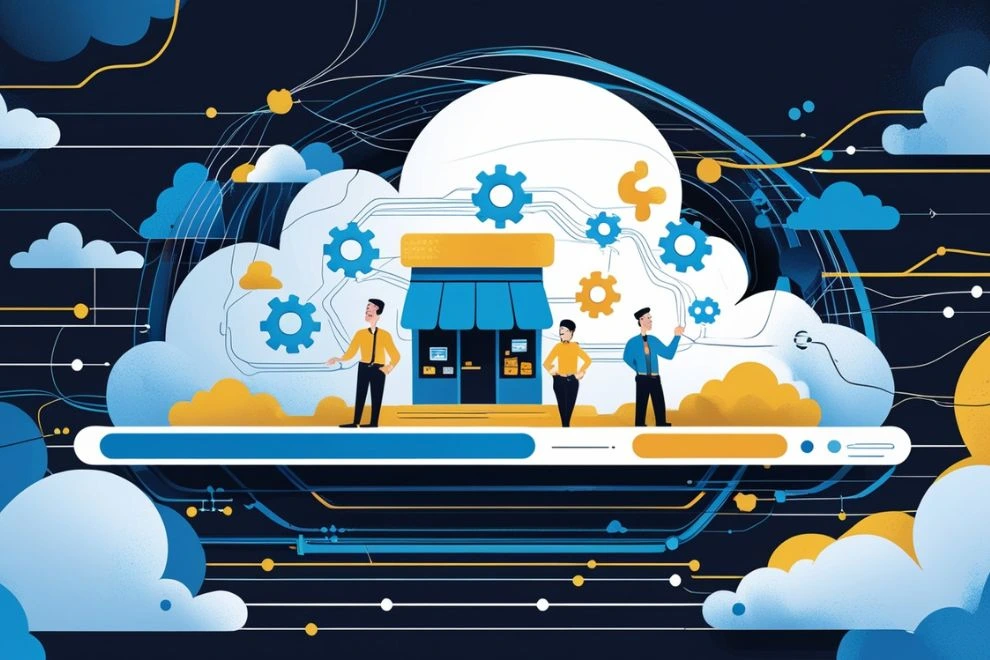Cloud ERP Integration has become a crucial aspect for small and medium-sized enterprises (SMEs) striving to enhance operational efficiency and scalability. While Cloud ERP Integration offers significant advantages, including cost-effectiveness, real-time data access, and seamless automation, SMEs often encounter numerous challenges during the implementation process. Understanding these challenges and their solutions is vital for a smooth transition to a cloud-based ERP system. This blog explores the key obstacles of Cloud ERP Integration and provides effective solutions to overcome them.
Key Challenges of Cloud ERP Integration
1. Data Migration and Compatibility Issues
One of the most significant challenges of Cloud ERP Integration is migrating existing data from legacy systems to the new cloud platform. SMEs often operate with outdated software, and ensuring seamless compatibility can be complex.
Solution: Conduct a comprehensive data audit before migration to identify redundant or obsolete data. Implement data cleaning strategies to remove inconsistencies and ensure data integrity. Utilizing data migration tools and working closely with ERP vendors can further simplify the process.
2. Integration with Existing Software
Many SMEs use various third-party applications for accounting, customer relationship management (CRM), and inventory management. Integrating these systems with a Cloud ERP solution can be challenging due to API limitations and software incompatibility.
Solution: Choose a Cloud ERP Integration solution that offers robust API support. Engage ERP vendors who provide pre-built connectors or middleware solutions to bridge integration gaps. Custom API development may also be necessary to ensure seamless data synchronization.
3. Security and Compliance Concerns
Security remains a primary concern in Cloud ERP Integration, especially for SMEs dealing with sensitive customer and financial data. Compliance with industry regulations such as GDPR, HIPAA, or PCI DSS can add complexity to integration efforts.
Solution: Select a Cloud ERP provider with advanced security measures, including encryption, multi-factor authentication, and regular security audits. Conduct thorough compliance checks and ensure the ERP system adheres to all necessary regulatory requirements.
4. Cost Constraints
While Cloud ERP Integration reduces IT infrastructure costs, the initial investment in licensing, implementation, and training can be a financial burden for SMEs with limited budgets.
Solution: Opt for a scalable and modular ERP system that allows SMEs to start with essential functionalities and expand as the business grows. Leverage cloud-based subscription models to distribute costs over time rather than incurring a hefty upfront expenditure.
5. Employee Resistance to Change
Employees accustomed to traditional systems may resist adopting new Cloud ERP solutions due to a lack of familiarity or fear of job displacement.
Solution: Implement change management strategies, including employee training programs, workshops, and ongoing support. Demonstrating the benefits of Cloud ERP Integration in simplifying daily tasks can encourage user adoption.
6. Downtime and Business Disruptions
Transitioning to a new Cloud ERP system may cause temporary business disruptions, impacting productivity and customer service.
Solution: Develop a phased implementation strategy to ensure a smooth transition. Conduct pilot testing before full deployment to identify potential issues. Additionally, schedule the integration during non-peak hours to minimize disruptions.
7. Scalability and Future Growth
Many SMEs face scalability issues with Cloud ERP Integration as their business grows. Choosing an ERP solution that cannot accommodate future expansion can lead to costly upgrades or replacements.
Solution: Select a Cloud ERP system with scalable features, allowing businesses to add modules and functionalities as needed. Regularly review system performance and upgrade plans to align with business growth objectives.
8. Limited IT Expertise
SMEs often lack in-house IT expertise, making Cloud ERP Integration challenging in terms of troubleshooting, maintenance, and optimization.
Solution: Partner with experienced Cloud ERP vendors who offer reliable customer support and managed services. Investing in basic IT training for employees can also enhance system utilization and efficiency.
9. Customization Challenges
Standard ERP solutions may not meet all business-specific requirements, making customization a necessity. However, excessive customization can lead to higher costs and prolonged implementation timelines.
Solution: Identify core business needs before selecting an ERP system to minimize customization requirements. Work with vendors who offer flexible and configurable ERP solutions tailored to industry-specific needs.
10. Data Synchronization and Real-Time Access
Ensuring real-time data synchronization across multiple departments can be a challenge, particularly for SMEs operating in different locations.
Solution: Choose a Cloud ERP solution that offers real-time data synchronization and cloud-based access. Implement strong data governance policies to maintain consistency and accuracy across all business functions.
Cloud ERP Solutions & Cloud ERP Obstacles
Cloud ERP Integration presents numerous challenges for SMEs, but these obstacles can be effectively managed with the right approach. By addressing data migration issues, ensuring seamless integration, maintaining security compliance, and focusing on employee training, SMEs can successfully transition to a cloud-based ERP system. Additionally, selecting a scalable, cost-effective, and customizable ERP solution ensures long-term business growth and operational efficiency.
Embracing Cloud ERP Integration enables SMEs to streamline operations, enhance productivity, and gain a competitive edge in the market. While the road to integration may have hurdles, the long-term benefits far outweigh the initial challenges, making Cloud ERP a vital investment for SMEs aiming for digital transformation.


